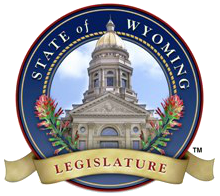
The coat of arms of the state of New York was formally adopted in 1778, and appears as a component of the state's flag and seal.
The Territory of Oregon was an organized incorporated territory of the United States that existed from August 14, 1848, until February 14, 1859, when the southwestern portion of the territory was admitted to the Union as the State of Oregon. Originally claimed by several countries, Spanish "El Orejón" was part of the Territorio de Nutca (1789–1795), later in the 19th century, the region was divided between the British Empire and the US in 1846. When established, the territory encompassed an area that included the current states of Oregon, Washington, and Idaho, as well as parts of Wyoming and Montana. The capital of the territory was first Oregon City, then Salem, followed briefly by Corvallis, then back to Salem, which became the state capital upon Oregon's admission to the Union.

The Territory of Wyoming was an organized incorporated territory of the United States that existed from July 25, 1868, until July 10, 1890, when it was admitted to the Union as the State of Wyoming. Cheyenne was the territorial capital. The boundaries of the Wyoming Territory were identical to those of the modern State of Wyoming.

The Territory of Idaho was an organized incorporated territory of the United States that existed from March 3, 1863, until July 3, 1890, when the final extent of the territory was admitted to the Union as Idaho.

The Territory of Utah was an organized incorporated territory of the United States that existed from September 9, 1850, until January 4, 1896, when the final extent of the territory was admitted to the Union as the State of Utah, the 45th state. At its creation, the Territory of Utah included all of the present-day State of Utah, most of the present-day state of Nevada save for Southern Nevada, much of present-day western Colorado, and the extreme southwest corner of present-day Wyoming.

The flag of Florida consists of a red saltire on a white background, with the state seal superimposed on the center. The flag's current design has been in use since May 21, 1985, after the design of the Florida state seal was graphically improved and officially sanctioned for use by state officials.

The flag of West Virginia is the official flag of the U.S. State of West Virginia and was officially adopted by the West Virginia Legislature on March 7, 1929. The present flag consists of a pure white field bordered by a blue stripe with the coat of arms of West Virginia in the center, wreathed by Rhododendron maximum and topped by an unfurled red ribbon reading, "State of West Virginia." It is the only state flag to bear crossing rifles, meant to illustrate the importance of the state's fight for liberty during the Civil War as the southern unionist 35th state.

The flag of Wyoming was officially adopted to represent the U.S. state of Wyoming on January 31, 1917. The flag consists of the silhouette of an American bison. The red symbolizes the Native Americans and the blood of pioneers who gave their lives. The white is a symbol of purity and uprightness. The blue is the color of the skies and distant mountains. It is also a symbol of fidelity, justice and virility. The bison represents the local fauna, while the seal on it suggests the custom of branding livestock.

The Great Seal of the State of Hawaii was designated officially by Act 272 of the 1959 Territorial Legislature and is based on the territorial seal. Modifications to the territorial seal included the use of the words "State of Hawaii" at the top and "1959" within the circle. Provisions for a seal for the state of Hawaii were enacted by the Territorial Legislature and approved by Governor William F. Quinn on June 8, 1959. The passage of the Admission Act in 1959, admitted Hawaii as the 50th State of the United States of America on August 21, 1959.

The Wyoming State Capitol is located in the city of Cheyenne. Cheyenne is the seat of government for the U.S. state of Wyoming. Built between 1886 and 1890, the capitol is located in Cheyenne and contains the chambers of the Wyoming State Legislature as well as the office of the Governor of Wyoming. It was designated a U.S. National Historic Landmark in 1987. The Capitol underwent an extensive three-year renovation and reopened to the public on July 10, 2019.

The Great Seal of the State of New Mexico is the official seal of the U.S. state of New Mexico. It is enshrined in Article V, Section 10, of the New Mexico State Constitution, which requires a state emblem to be kept by the secretary of state for official documents and other expressions of statehood. Rooted in the official seal of the New Mexico Territory established in 1851, it was adopted in 1913, one year after New Mexico was admitted as the 47th state.

The Great Seal of the State of Illinois is the official emblem of the U.S. state, and signifies the official nature of a document produced by the state of Illinois. The flag of the state of Illinois consists of the seal of Illinois on a white background, with the word "Illinois" underneath the seal. The present seal was adopted in 1869, the flag bearing the central elements of the seal was adopted in 1915, and the word Illinois was added to the flag in 1970. In a 2001 survey by the North American Vexillological Association, the flag of Illinois was ranked 49th out of 72 different flags of states and territories, mainly in the US and Canada.

The seal of the Territory of Idaho was adopted in 1863 and redrawn several times before statehood in 1890. The first state Great Seal was designed in the 1890s by Emma Edwards Green, the only woman to design a U.S. state seal. That seal was used until 1957, when the seal was slightly redrawn by Paul B. Evans and the Caxton Printers, Ltd. at the request of the state government, in order to add more anthropocentric elements to the centered shield.

The Seal of the State of Oregon is the official seal of the U.S. state of Oregon. It was designed by Harvey Gordon in 1857, two years before Oregon was admitted to the Union. The seal was preceded by the Salmon Seal of the Provisional Government and the Seal of the Oregon Territory. The state seal is mandated by Article VI of the Oregon Constitution.

The Wyoming State Legislature is the legislative branch of the U.S. State of Wyoming. It is a bicameral state legislature, consisting of a 62-member Wyoming House of Representatives, and a 31-member Wyoming Senate. The legislature meets at the Wyoming State Capitol in Cheyenne. There are no term limits for either chamber.
The Wyoming Stock Growers Association (WSGA) is an American cattle organization that started in 1872 among Wyoming cattle ranchers to standardize and organize the cattle industry but quickly grew into a political force that has been called "the de facto territorial government" of Wyoming's organization into early statehood, and wielded great influence throughout the Western United States.
Sharon Tyndale was an American politician and designer who was the Secretary of State of Illinois, from 1865 to 1869. His tenure is notable for his redesign of the Great Seal of the State of Illinois.

Historical coats of arms of the U.S. states date back to the admission of the first states to the Union. Despite the widely accepted practice of determining early statehood from the date of ratification of the United States Constitution, many of the original colonies referred to themselves as states shortly after the Declaration of Independence was signed on 4 July 1776. Committees of political leaders and intellectuals were established by state legislatures to research and propose a seal and coat of arms. Many of these members were signers of the Articles of Confederation, Declaration of Independence, and United States Constitution. Several of the earliest adopted state coats of arms and seals were similar or identical to their colonial counterparts.

Wyoming was the first place in the world to incorporate women's suffrage, although other jurisdictions had already given limited suffrage to women who met various property qualifications. A U.S. territory in 1869, Wyoming's first territorial legislature voted to give women the right to vote and to hold public office. A legislature made entirely of men passed the woman's suffrage bill in 1869 entitled "An Act to Grant to the Women of Wyoming Territory the Right of Suffrage, and to Hold Office.” The territory retained its woman suffrage law even when that law could have jeopardized the Wyoming Territory's application for statehood. In 1890, Wyoming became the first U.S. state allowing its woman citizens to vote.


















